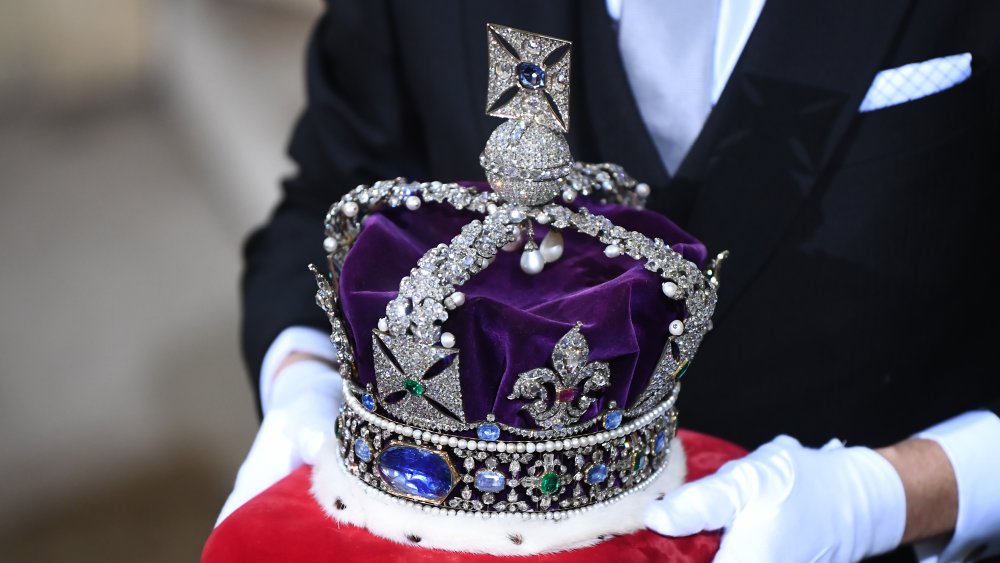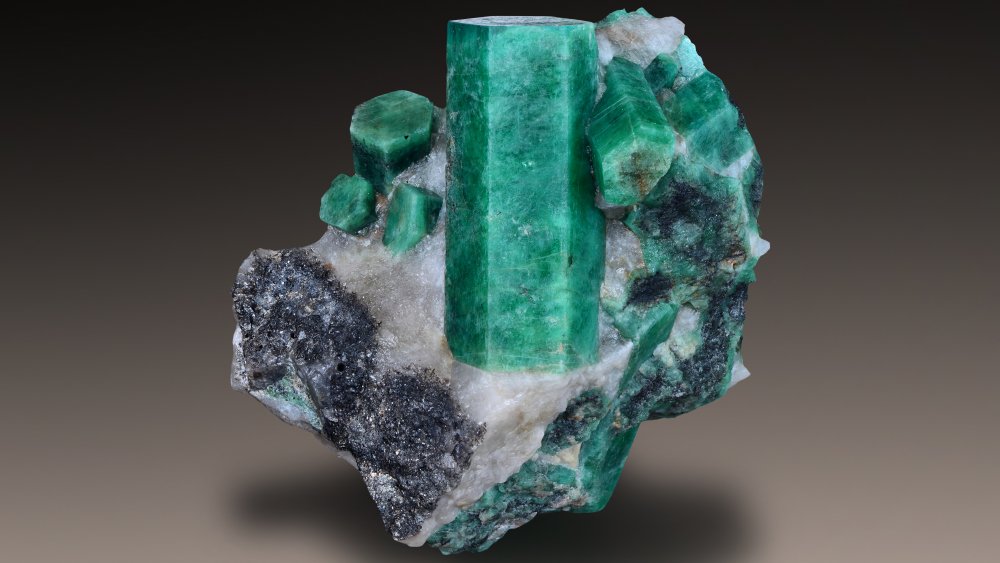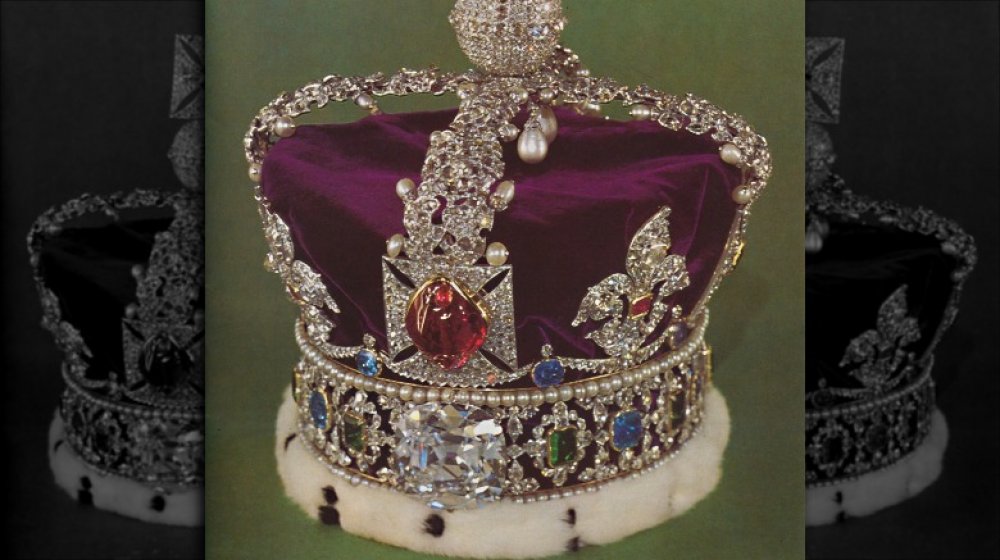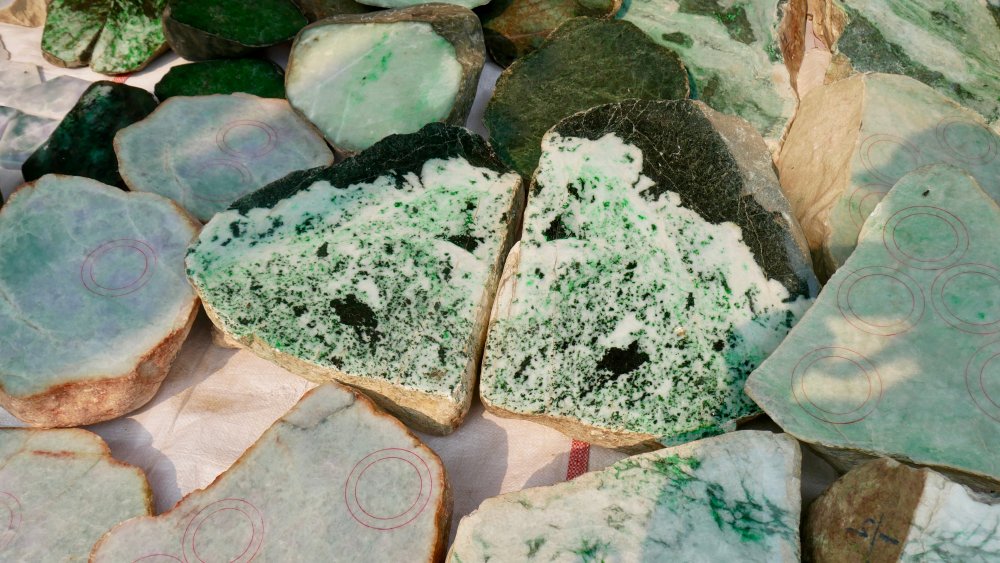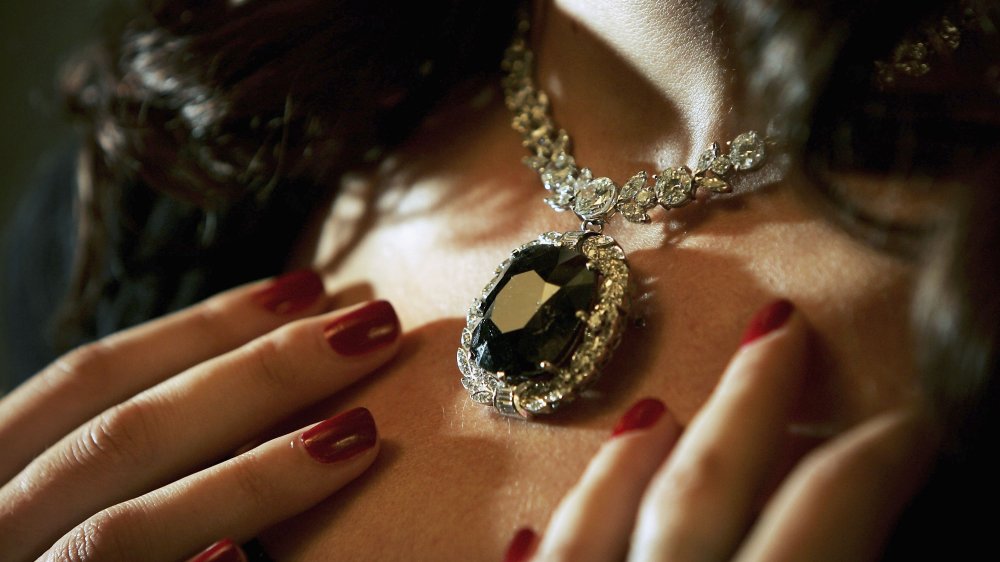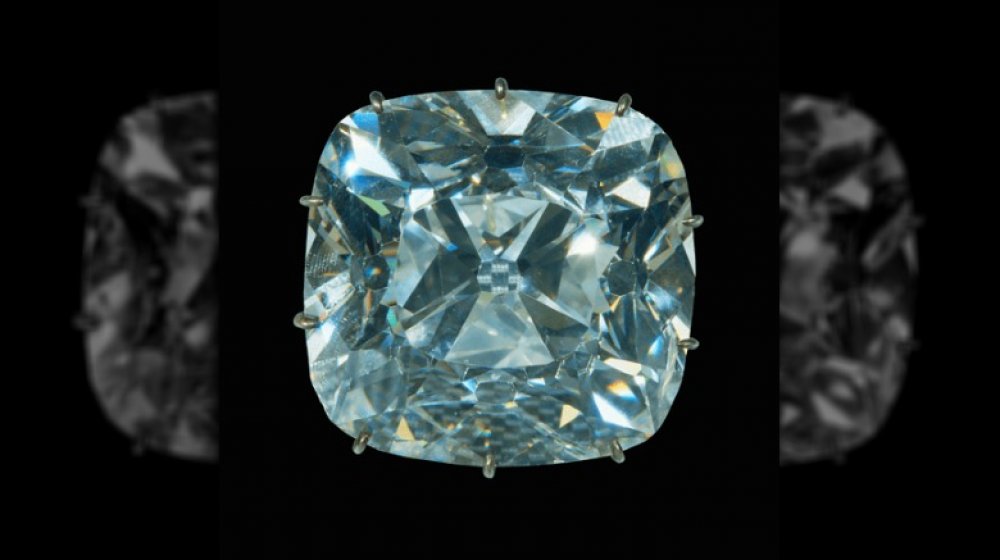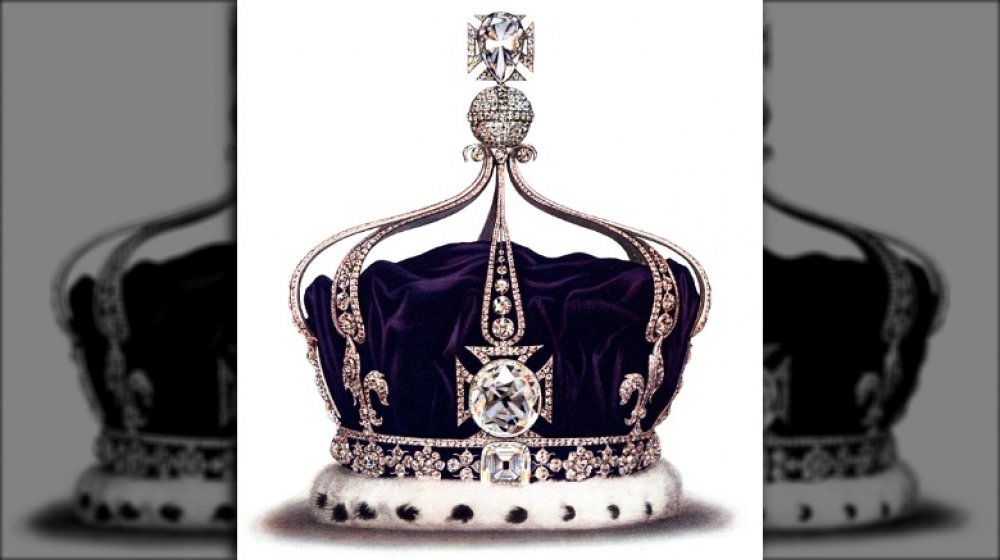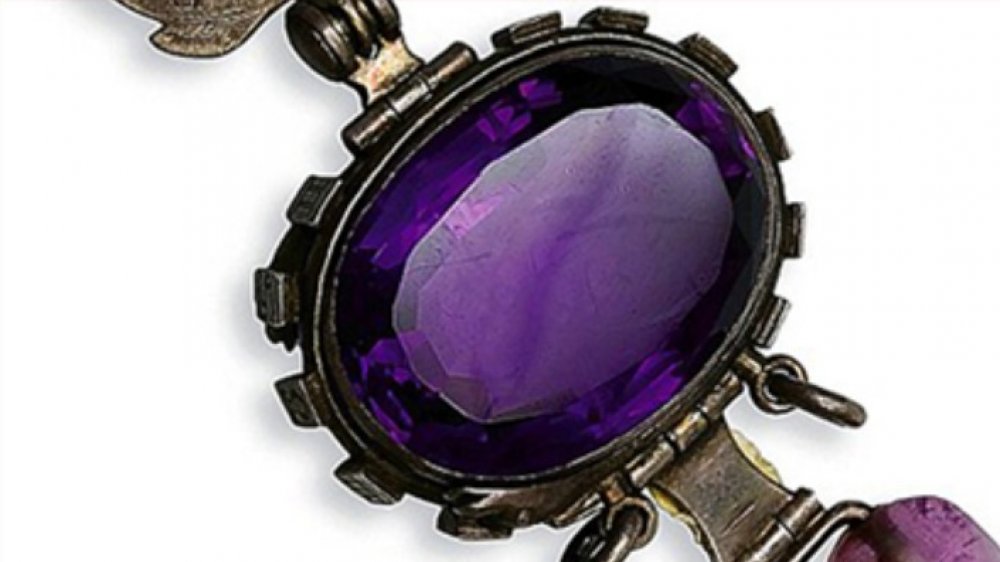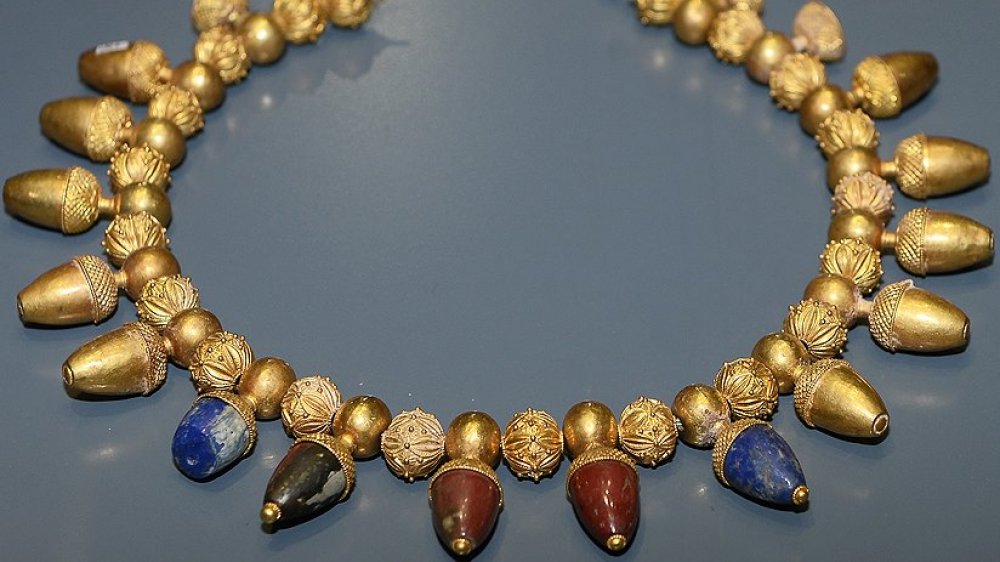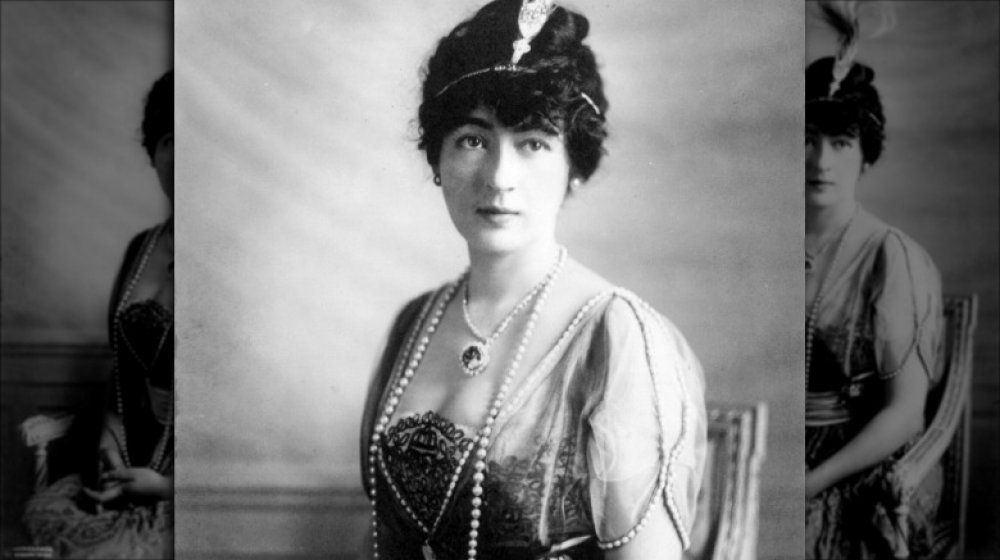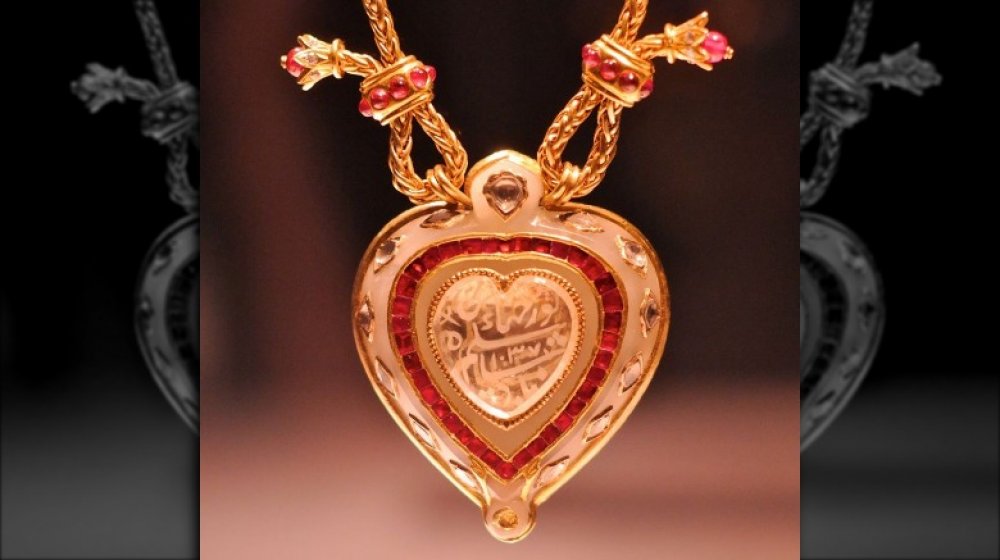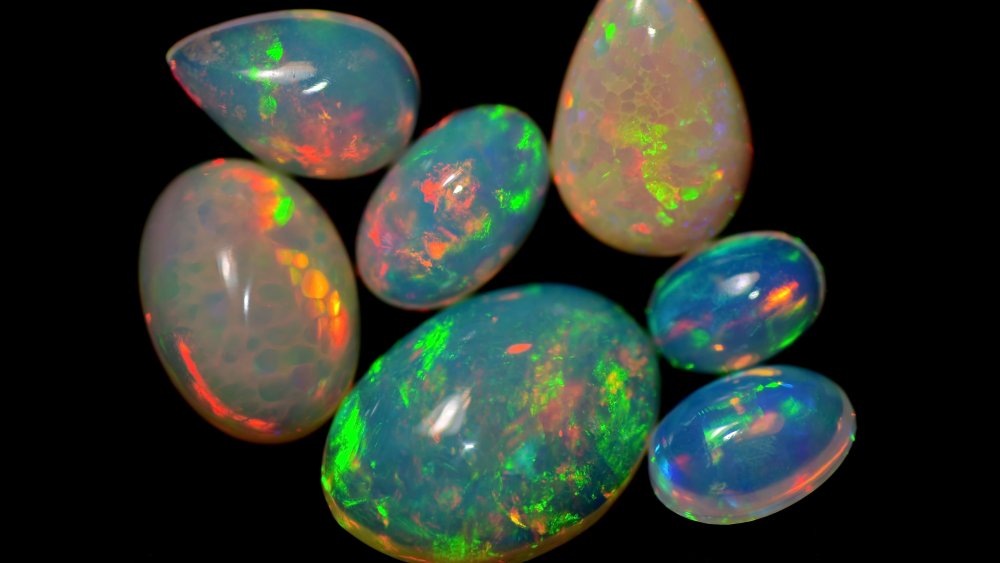History's Most Cursed Gems
Most people buy precious or semi-precious stones at some point in their lives, whether it's for themselves or for a loved one. There's something neat about pretty rocks, and humans have thought so for a long time.
According to London antiquities dealers Ancient & Oriental, the Ancient Egyptians were huge fans of jewelry, and preferred stones like lapis lazuli and carnelian. Emeralds, sapphires, and rubies moved along the Silk Road, and in the ancient world, it was more about meaning and symbolism than anything else. Purple amethysts were associated with Dionysus, god of wine, while the deep red garnet was symbolic of the pomegranate seed of Persephone.
Given our close connection with some of the world's most distinctive gemstones, it's not entirely surprising that some of the biggest and most beautiful examples have been passed down through generations, usually of the rich and famous. Some, though, seem to bring more than just bling: some, it's said, bring along a curse. Are these stories just coincidence... or something more?
The 752-pound emerald from hell
The story of the Bahia Emerald is equal parts bizarre and insane, and those who have gotten tangled in its web swear the stone came right from hell. Yikes. The emerald is actually a conglomerate — a bunch of emeralds stuck together in another kind of rock called black schist (like the version pictured). When Wired did a deep dive into the emerald's sordid tale, it was sitting in a Los Angeles County Sheriff's Department vault, and no one knew if it was worth a few hundred bucks or — as some said — $925 million.
The emerald was unearthed in 2001, and after that it bounced from owner to owner — so much so that... it's a little fuzzy. One thing they did confirm was that person after person seemed to fall victim to its charms and make some insane sacrifices to try to own it. Some made bad business deals, one man staged his own kidnapping, another claimed to have a bill of sale, but it had been destroyed when his house conveniently burned down. At one point, the Bahia Emerald was submerged in the floodwaters of Hurricane Katrina.
It wasn't until 2015 that the Los Angeles Times reported the courts had decided who — of the 10 people, three corporations, and one government (Brazil) involved in the tale — owned the emerald. (It was one of the companies.)
The stone cursed by deceit and murder
Most will be familiar with the Black Prince's Ruby, even if the name's not familiar: it's the big red stone on Britain's Imperial State Crown. And The Arkenstone says that it's cursed, way back to 1362. That's when Abu Said, the Sultan of Granada, arranged to meet with King Pedro the Cruel of Castile. Castile had been marching through Granada and picking away at their territory, and Abu Said was hoping for peace. What he found was murder.
King Pedro killed the Sultan and his retinue, then plucked the stone off the sultan's body. Fast forward a bit: King Pedro's next conflict was with his own brother, and in that fight, he called on the help of England's Edward, the Black Prince. As thanks, he gave him the ruby.
Edward died a slow death, and others who inherited the stone would also die badly. Richard II was murdered, King Henry IV died slowly, the Tudors had disaster after disaster. Then Mary, Queen of Scots was executed (via Historic UK), and so was Charles I. When the monarchy was restored in 1660, the stone ended up as the centerpiece of the new Imperial State Crown, and it's now in the Tower of London. Is that a way of keeping the stone pacified?
When a treasure horde of precious gems is a curse, not a blessing
Jade has always had a special place in Chinese culture. According to the Ancient History Encyclopedia, it's long been thought to have magical qualities, and it's been carved into ritual objects and used in jewelry for centuries. Fast forward to the 21st century, and jade is still incredibly valuable. That might make it seem like the vast jade deposits found in Myanmar might be a good thing, but according to Time, that's not the case at all.
About half of Myanmar's GDP is tied to the jade trade, but that's only part of the story. Around 300,000 jade pickers sift through the debris of large-scale mining industries, and their lives aren't good ones. Even as they live and work in conditions where there's constant threat of landslides and deadly disease, drug addiction is rampant. So is violence and human rights abuses. Some landslides kill hundreds of miners at a time, while others take only a few lives. Those nearby? They get back to work, while the Burmese military and Kachin rebels fight for control with all the firepower they can muster... and a lot of scattered land mines.
One ethnic Kachin who's been caught in the middle of the war over jade put it this way: "If there was no jade, there would be no war in the Kachin state. We are living and sleeping on so much jade in our earth, but jade is Kachin's curse."
The Eye of Brahma is always watching
There's two diamonds that bear the name "Orlov": the Black and the White. According to legend, the White was stolen from the statue of an unnamed deity standing in a temple in southern India, and eventually found its way into the hands of Catherine the Great. She didn't return the affections of the man who gave it to her, but she did keep the diamond, thank you very much.
Adiamor says that it's the Black Orlov that's got a bit more of the curse about it, a stone that was supposedly stolen from a statue of Brahma in a Pondicherry temple. To add insult to injury, it was a monk who stole it.
Gem Select says this one, too, ended up in Russia, where it belonged to the Princess Nadia Vygin-Orlov. She reportedly fled Russia during the revolution, and ultimately committed suicide in 1947. Oddly, the story also says that by this time, the stone had passed out of her possession: in 1932 a diamond dealer had brought it to the US. He sold the diamond and, about a week later, leapt from the top of a skyscraper in Manhattan. The Black Orlov was linked to one more suicide, that of Princess Leonilla Viktorovna-Bariatinsky. She, too, had previously owned the stone. Or... did they? Some suggest that there never was a Russian princess named Nadia Vygin-Orlov, and that Leonilla died of natural causes and extreme old age.
A slave, some poor choices, and a curse
The story of the Regent Diamond starts in 1701, with a slave laboring in India's Partiyala mines. Lang Antiques says that's where the 410-carat diamond was discovered, and the man who found it decided he was going to keep it. So, he did what any reasonable person would do: he sliced open his leg, stuck the diamond inside, and bandaged himself up. The unnamed slave then hopped on a ship for Madras, where the captain figured out what was going on, killed the slave, and took the diamond.
That... was a bad idea. Even though he did get to Madras to sell it, he promptly killed himself. The diamond merchant he sold it to was now holding stolen property, and everyone knew it. That led him to take a price that was a mere fraction of the diamond's actual worth from Thomas Pitt — yes, a relation of the man who founded Pittsburgh. Pitt got a great deal, sure, but his reputation was then ruined by rumors about just how unethical he was.
Pitt cut the diamond, selling the smaller stones off, and naming the larger one the Pitt Diamond. That was renamed the Regent when it ended up in France... and delivered the curse right to Louis XVI and Marie Antoinette who (spoiler alert) also died. From there, it was passed on to Napoleon, and it eventually made its way to the Louvre, where it seems happy enough... for now.
When history itself is cursed
In 1849, a British viceroy wrote (via the Independent): "My motive was simply this: That it was more for the honour of the Queen that the Koh-i-Noor should be surrendered directly from the hand of the conquered prince into the hands of the sovereign who was his conqueror, than it should be presented to her as a gift."
Ouch. The stone in question — the Koh-i-Noor Diamond — would ultimately be set into that fancy hat that's been worn by female British rulers. And that "female" part is important: the gemstone, which was mined somewhere around the year 1100, was clearly cursed by 1306. That's when it was mentioned in a Hindu text that said: "Only God or a woman can wear it with impunity." That's... the kind of thing you go along with... just in case.
A big part of the curse, says the Smithsonian, are the many terrible circumstances around it. As well as those above, in 1739, the Persian ruler Nader Shah invaded Delhi, slaughtered tens of thousands of people, and left with so much loot that he needed 12,000 horses, 700 elephants, and 4,000 camels to carry it all. Among that loot was the diamond, which he'd removed from the Peacock Throne.
You could argue there's another curse here, too: India says that they should get the jewel back. England says, "Nah." And plenty of others think that's just not cool, and that means that part of its curse is controversy.
A beautiful and sinister imposter
Imposter? Yes, because the Delhi Purple Sapphire isn't actually a sapphire, it's an amethyst, says Atlas Obscura. Most have called it deadly. It starts in India, when it was stolen from Kanpur's Temple of Indra. The man who stole it — a cavalryman named Colonel W. Ferris — soon lost everything, including his health. He passed the stone on to his son, who suffered the same fate before giving it to his friend. That friend? He committed suicide, and in his will, sent the stone back to the man who'd given it to him. How's that for karma?
By 1890, the amethyst ended up in the possession of Edward Heron-Allen, and after his life took multiple turns for the worse, he tried to pawn it off onto his friend. She happened to be a singer, who completely lost her voice after taking the stone. Heron-Allen decided to try to get rid of it once and for all, so he chucked it in the Thames... only to have it given back to him.
Determined to keep it somewhere it couldn't hurt anyone, he then had it sealed within seven bank lock boxes. It was only years after his death that his daughter gave it to the Natural History Museum, where it's made curator Richard Savin incredibly sick every time he's tried to attend a meeting of the Heron-Allen Society. Coincidence? Or curse?
A trail of broken hearts
According to Christopher Mason, the pearl that would later be named La Peregrina — or, the Wanderer — was discovered in the 16th century on the coast of Panama, and presented to Ferdinand V by Vasco Núñez de Balboa. By the 1550s, it had been given to Mary I of England by her future husband, Philip II... who, when he finally met Mary, cursed at the artist who'd painted her portrait for taking a bit of artistic license.
And here's where the curse starts — Mary suffered a few phantom pregnancies and her husband abandoned her, returning to Spain, says King Jewelers. Through the 17th century, the pearl bounced around France and Spain, when it was worn by Philip IV at the rather unhappy marriage between Louis XIV and Maria Theresa. Eventually, it passed to the 3-year-old (and severely disfigured) Charles II, who married a woman who soon began a descent into depression and ultimately died young.
Over the next centuries, there were just as many unhappy marriages the pearl was witness to: Charles IV's Maria Luisa bore at least one child that wasn't his, Napoleon's brother Joseph gave the pearl to a daughter of Empress Josephine... who was then ordered to marry someone else, and ultimately left that husband. And so on, and so on... all the way up to when it was bought by Richard Burton and given as a gift to Elizabeth Taylor... whom he divorced. Twice.
Jewelry, gemstones, an ancient princess, and a curse
In the 1960s, Arthemis says that a group of treasure hunters hit the jackpot: a stash of gold, jewelry, gems, tomb paintings, and marble sphinxes. They were discovered in burial tombs thought to belong to a princess who lived around the 6th century BC, in an area of Turkey once known as Lydia — which is why the treasure is known as either the Lydian Horde, or Karun Treasure. What's followed is a nightmare of legal arguments that involve Turkey wanting their treasure back and everyone else saying, "Nah." But we're talking about curses.
Locals who were around when the treasure was excavated (and by that, we mean "with dynamite") say (via Ancient Origins) that those who entered the burial chambers were almost immediately overwhelmed with feelings of sickness. And according to The Guardian, those who have handled pieces of the treasure since have claimed some not-so-great consequences.
Those are people like museum director Kazim Akbiyikoglu, who was arrested for replacing pieces of the treasure with fakes, and selling the real items off to cover his gambling debts. He blamed his entire misfortune on the curse, which was rumored to have started with the seven men who actually did the digging: they're all said to have died in terrible ways, or suffered misfortune. But there's good news — the Archaeological Museum in Uşak now has all pieces together again, and they're hoping it ends the curse.
The trail of victims
The Hope Diamond was reportedly stolen from a Hindu statue and condemned to curse anyone who owns it (although Mental Floss says that origin story's not proven.) Take Louis XIV, who bought it from the man who was said to have stolen it, then died of gangrene. Then, there was Nicolas Fouquet, who Louis let wear the diamond occasionally — he fell from favor, was imprisoned, and he's even one of the candidates for the Man in the Iron Mask.
Then there was Louis XVI and Marie Antoinette, and we all know their end involved a guillotine. Before Marie met her maker, though, there was the nasty business of her confidante, Marie-Louise, who was clubbed, disemboweled, decapitated, and had her head paraded beneath Marie Antoinette's window... presumably not while wearing the stone.
It took some ordinary people, too. A jeweler who recut the diamond, Wilhelm Fals, was killed by his son, who then committed suicide, then a Greek merchant, drove his car off a cliff with himself, his wife, and their child inside. Evalyn Walsh McLean (pictured) had it particularly rough (perhaps because she liked to let her dog wear the gem). She lost her mother-in-law, her 9-year-old son, her husband (to both another woman and a mental institution), and her 25-year-old daughter. She obviously blamed the gem: she insured it for $155 and mailed it to the Smithsonian... unfortunately for mailman James Todd, who not only dropped off the gem, but suffered two major accidents and lost his house in a fire.
The ancient gemstone that no one wants
This curse is a little different... it's the curse of not being able to prove a history.
The story goes like this (via Page Six): On Elizabeth Taylor's 40th birthday, Richard Burton gave her a diamond and ruby pendant worth a handful of millions of dollars, said to have been owned by Shah Jahan, the guy who built the Taj Mahal in an even more expensive gesture of undying love. In 2011, Taylor's estate turned the pendant over to the auction house Christie's, which sold it for $8 million. But there was a massive catch — the buyer realized there was no proof that the pendant had belonged to Shah Jahan, as advertised.
Christie's didn't want to make the buyer mad, so they took the necklace back and refunded him. So, they're out $8 million, and here's the thing — the Taylor estate says they don't want the pendant, either, and Christie's decision to cancel the sale was just all on them. What followed was a whole bunch of, "No, you take it!" lawsuits, and that just screams "Cursed!" (Or possibly, "Oops!")
The unluckiest type of gemstone of them all
Diamonds might be a girl's best friend, but emeralds? They'll increase your prophetic gifts. And rubies? They'll protect against misfortune and make your dealings with others much more pleasant. But there's one stone that has something of a bad reputation: the opal. According to Opals Down Under, opals have such a bad image that there are jewelers in some countries — including some parts of southern Europe and the Middle East — that won't even sell them. No one wants them! Why?
It goes back a while: while the Ancient Romans believed opals to be good luck, throughout Medieval Europe, opals became the stone of choice for witches and warlocks, who were thought to use them to focus their evil energies. And... it kind of makes sense — they do sort of look like eyes, and it was also a time when the Evil Eye was incredibly dangerous. Tough times for the opal continued, and during the Black Plague, it became associated with disease and death.
The stone's image wasn't helped when Alfonzo XII ditched the Comtesse de Castiglione for another woman. The Comtesse sent that woman an opal and gold ring for the pair's wedding, and the bride died just two months later. The ring was then passed to the king's grandmother, who died, and his sister, who, you guessed it, died. For some reason, his sister-in-law then wanted the ring and she lived happily ever after. Just kidding — she died too.
